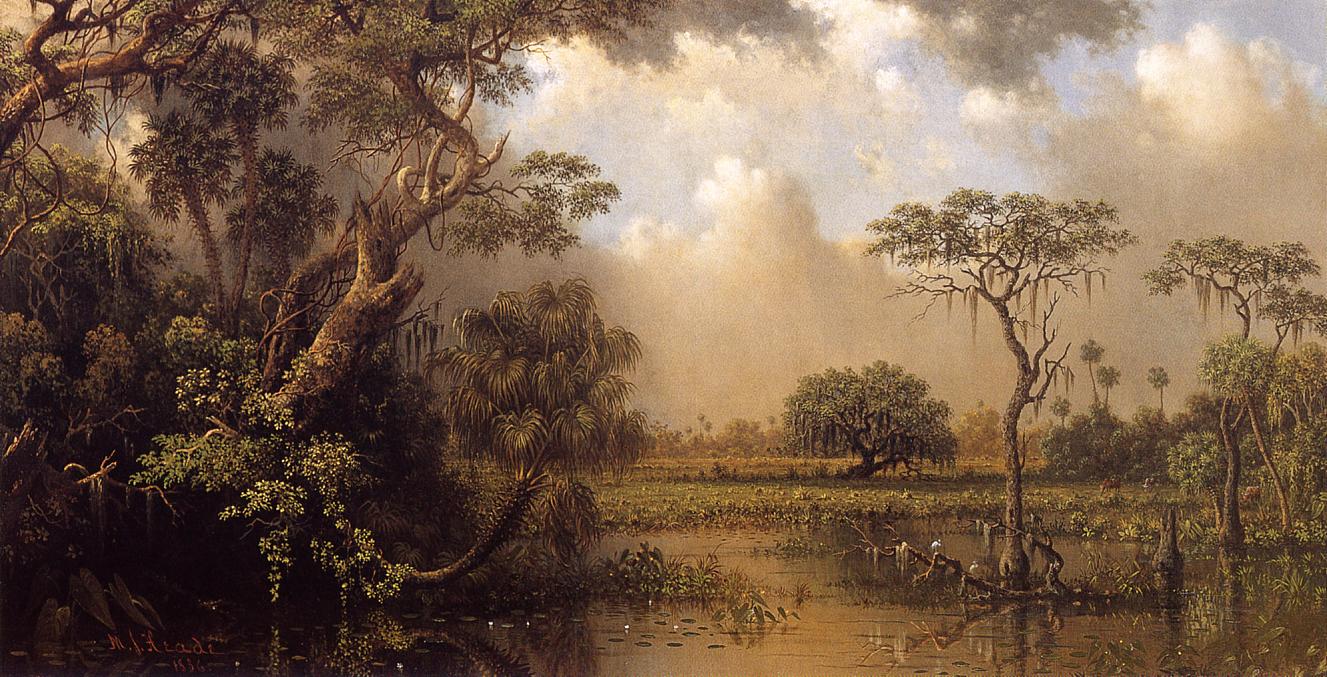Heade’s primary interest in landscape, and the works for which he is perhaps best known today, was the New England coastal salt marsh. In 1883 Heade moved to Saint Augustine, Florida and took as his primary landscape subject the surrounding subtropical marshland.

Martin Johnson Heade (August 11, 1819 – September 4, 1904) was a prolific American painter known for his salt marsh landscapes, seascapes, portraits of tropical birds, and still lifes. His painting style and subject matter, while derived from the romanticism of the time, is regarded by art historians as a significant departure from that of his peers.
Heade was born and raised in 1819 in Lumberville, Pennsylvania, a small hamlet along the Delaware River in Bucks County, Pennsylvania. Until the mid 1850s, his family ran what is now called the Lumberville Store and Post Office, the village’s sole general store. The family spelling of the name was Heed.
Heade received his first art training from the folk artist Edward Hicks, who lived in nearby Newton, and possibly also from Edward’s cousin, Thomas Hicks. Heade was painting by 1839; his earliest known work is a portrait from that year. He traveled abroad and lived in Rome for two years. He first exhibited his work in 1841, at the Pennsylvania Academy of the Fine Arts in Philadephia, and again in 1843 at the National Academy of Design in New York. Heade began exhibiting regularly in 1848, after another trip to Europe, and became an itinerant artist until he settled in New York in 1859.















